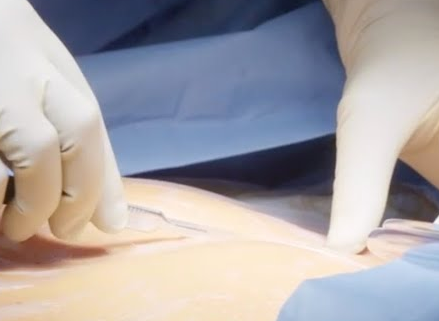Limberg flap surgery is performed on patients who have a significant or recurring pilonidal illness. During the procedure, a cut or incision in the shape of a diamond is created in the patient’s skin to remove the afflicted skin and any underlying tissue. A further cut is made in the skin to release tissue from the buttock that is next to the one being operated on.
The sacrococcygeal pilonidal sinus is a disease that is widespread in adults, particularly in males, and it is responsible for a substantial amount of morbidity as a result of the disease itself as well as the surgery that is performed to treat it. It is diagnosed by locating the epithelialized follicular opening (i.e., sinus). Pilonidal is a Latin term that means “nest of hairs” in English.
Limberg Flap Surgery Procedure
Spinal anesthesia is administered before surgery. Any pus or discharge coming from the sinuses is then cultured and analyzed for its sensitivity. Patients are positioned in a jackknife position with their buttocks strapped to achieve the most possible exposure. After the area that is going to be cut out has been painted and draped, a permanent marker is used to mark the flap lines and the area that is going to be cut out.
The sinus is cut through the pre-sacral fascia of the rhomboid incision, which is performed with equal-length cuts on each side. The flap is created by making a horizontal incision from the muscle’s tendon to its fascia. Electrocautery is used to achieve hemostasis. The flap is transferred over the rhomboid defect formed by sinus excision. Through a second stab incision, a suction drain is implanted in the wound cavity. Vicryl interrupted 2.0 suture is used to connect subcutaneous tissue.
Prolene 2-0 interrupted suture is used to seal the skin. The drain is removed between 48 and 72 hours. The removal of alternate sutures takes place on the tenth postoperative day (POD). The remaining sutures are extracted between the fifteenth and twentieth postoperative days. Patients are recommended to avoid extended sitting or exertion for two weeks following surgery. It is recommended to use a hair removal lotion or shave for at least one month. Patients are monitored in the outpatient department every month for one year.
Limberg Flap Surgery Technique
Limberg created the rhomboid flap for the sacrococcygeal pilonidal sinus in 1946. He also presented a technique for sealing a defect in the shape of a rhombus with a transposition flap at an angle of sixty degrees. This flap is simple to perform, with sutures placed away from the midline, resulting in a tension-free flap of unscarred skin in the midline that aids in hygiene maintenance by decreasing erosions, sweating maceration, and scar development.
Studies on sacrococcygeal pilonidal sinus illness concluded that Limberg flap restoration after rhomboid excision of the sinus area is the most effective and least risky option compared to primary closure and other flap operations.
Limberg Flap Surgery Complications
The sacrococcygeal pilonidal sinus causes considerable morbidity in patients. Due to the frequent infections, ongoing agony from discharge, and high recurrence rates with routine treatments, the treating surgeon also appears to be a nightmare. The patient’s symptoms improved without dressings and the condition healed in two weeks after Limberg flap restoration followed by pilonidal sinus excision.
This technique is simple to conduct in a short period, beneficial in both primary and recurring disorders, and has very low complication and recurrence rates, which can be further lowered by thorough skin closure. Other benefits include a fast recovery period, a brief hospital stay, and a speedy return to everyday activities. Infection at the surgical site, delayed wound healing (dehiscence), seroma development, flap necrosis, and recurrence are all possible outcomes of Limberg flap reconstruction surgery. It may be necessary to leave the wound open and pack it daily until it heals, which could take several weeks or even months. If sutured, the wound can rupture and leak blood or infectious material. This can often necessitate further surgery.
Limberg Flap Surgery Care
After surgery, patients must adhere to the following instructions:
- Shower every day.
- Avoid sitting on the wound till being examined by the nurse.
- Two weeks after surgery, visit the doctor to get the stitches removed.
- Make sure to follow up with the attending physician at the medical facility three months after the operation.
 Health & Care Information
Health & Care Information 


